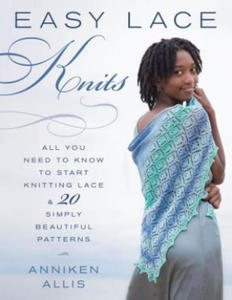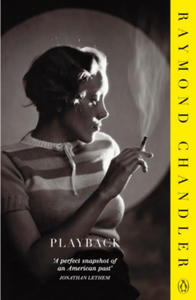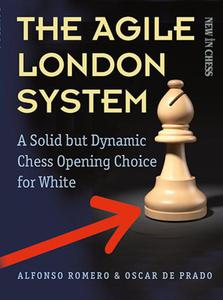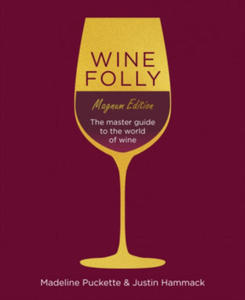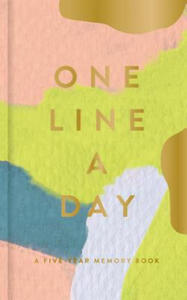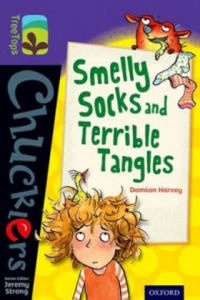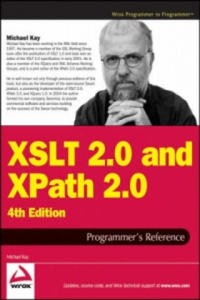libristo easy on the eye books
- znaleziono 42 produkty w 5 sklepach
Easy Lace Knits Stackpole Books
Książki / Literatura obcojęzyczna
Love the look of lace but think it's too complicated for the average knitter? Think again! With this book, Anniken Allis throws wide the door to lace for all knitters. Easy-to-learn lace patterns fool the eye into thinking they are far more complex than they actually are.
Sklep: Libristo.pl
A Brief History of Seven Killings - Marlon James
Książki & Multimedia > Książki
Opis - In A Brief History of Seven Killings, Marlon James combines masterful storytelling with his unrivaled skill at characterization and his meticulous eye for detail to forge a novel of dazzling ambition and scope. On December 3, 1976, just before the Jamaican general election and two days before Bob Marley was to play the Smile Jamaica Concert to ease political tensions in Kingston, seven unnamed gunmen stormed the singer"s house, machine guns blazing. The attack wounded Marley, his wife, and his manager, and injured several others. Little was officially released about the gunmen, but rumors abounded regarding the assassins" fates. A Brief History of Seven Killings is James"s fictional exploration of that dangerous and unstable time in Jamaica"s history and beyond. Deftly spanning decades and continents and peopled with a wide range of characters"assassins, drug dealers, journalists, and even ghosts"James brings to life the people who walked the streets of 1970s Kingston, who dominated the crack houses of 1980s New York, and who reemerged into a radically altered Jamaica of the 1990s. Brilliantly inventive, A Brief History of Seven Killings is an "exhilarating" (The New York Times) epic that"s been called "a tour de force? (The Wall Street Journal). Nazwa - A Brief History of Seven Killings Autor - Marlon James Oprawa - Twarda Wydawca - Riverhead Books Kod ISBN - 9781594633942 Kod EAN - 9781594633942 Rok wydania - 2016 Język - angielski Format - 14.0x24.0cm Ilość stron - 670 Podatek VAT - 5%
Sklep: InBook.pl
Playback Penguin Books
Książki / Literatura obcojęzyczna
Playback is a classic novel by Raymond Chandler, the master of hard-boiled crime. Stalking the tawdry neon wilderness of forties and fifties Los Angeles, Raymond Chandler's hard-drinking, wise-cracking Phillip Marlowe is one of the world's most famous fictional detectives. Playback finds Marlowe mixing business with pleasure - getting paid to follow a mysterious and lovely red-head named Eleanor King. And wherever Miss King goes, trouble seems to follow. But she's easy on the eye and Marlowe's happy to do as he's told, all in the name of chivalry, of course. But one dead body later and what started out as a lazy afternoon's snooping soon becomes a deadly cocktail of blackmail, lies, mistaken identity - and murder..."Anything Chandler writes about grips the mind from the first sentence". (Daily Telegraph). "One of the greatest crime writers, who set standards others still try to attain". (Sunday Times). "Chandler is an original stylist, creator of a character as immortal as Sherlock Holmes". (Anthony Burgess). Best-known as the creator of the original private eye, Philip Marlowe, Raymond Chandler was born in Chicago in 1888 and died in 1959.Many of his books have been adapted for the screen, and he is widely regarded as one of the very greatest writers of detective fiction. His books include The Big Sleep, The Little Sister, Farewell, My Lovely, The Long Good-bye, The Lady in the Lake, Playback, Killer in the Rain, The High Window and Trouble is My Business.
Sklep: Libristo.pl
Emaga 3 Piece Patio Sun Loungers with Tea Table Poly Rattan Black VidaXL
empty
Create an eye-catching and relaxing lounge area you have always dreamed of with this stylish sun lounger and tea table set. You can enjoy a relaxing, sunny afternoon with your friend on the sunbed! Made of the weather-resistant PE rattan, the chaise lounge is easy to clean, hard-wearing and suitable for daily use. It features a sturdy powder-coated steel frame, making the sun lounger perfectly stable and durable. Both sides of the bed can be pulled up and adjusted in different settings for the most comfortable seating or lying positions. The thickly padded cushion provides the ultimate comfort and added support. The cushion cover is removable for easy washing. You can even keep your drinks, phones, books or other small items within reach on the included side table. Note: We recommended covering the sunbed and table in the rain, snow and frost. Color: Black Color of cushion: Blue Material: PE rattan, powder-coated steel, fabric (100% polyester) Dimensions of sunlounger: 76.8" x 23.6" x 12.2" (L x W x H) Dimensions of tea table: 15.7" x 15.7" x 15.7" (L x W x H) Both sides of sunlounger adjustable Weather-resistant Easy to maintain Assembly required: Yes Delivery contains: 2 x Sunlounger 2 x Seat cushion 1 x Tea table
Sklep: emaga.pl
Emaga 3 Piece Patio Sun Loungers with Tea Table Poly Rattan Black VidaXL
empty
Create an eye-catching and relaxing lounge area you have always dreamed of with this stylish sun lounger and tea table set. You can enjoy a relaxing, sunny afternoon with your friend on the sunbed! Made of the weather-resistant PE rattan, the chaise lounge is easy to clean, hard-wearing and suitable for daily use. It features a sturdy powder-coated steel frame, making the sun lounger perfectly stable and durable. Both sides of the bed can be pulled up and adjusted in different settings for the most comfortable seating or lying positions. The thickly padded cushion provides the ultimate comfort and added support. The cushion cover is removable for easy washing. You can even keep your drinks, phones, books or other small items within reach on the included side table. Note: We recommended covering the sunbed and table in the rain, snow and frost. Color: Black Color of cushion: Red Material: PE rattan, powder-coated steel, fabric (100% polyester) Dimensions of sunlounger: 76.8" x 23.6" x 12.2" (L x W x H) Dimensions of tea table: 15.7" x 15.7" x 15.7" (L x W x H) Both sides of sunlounger adjustable Weather-resistant Easy to maintain Assembly required: Yes Delivery contains: 2 x Sunlounger 2 x Seat cushion 1 x Tea table
Sklep: emaga.pl
The Agile London System
Szachy > Książki New In Chess
It is not difficult to understand why the London System is such a popular chess opening with club players all over the world. Against virtually every Black defence after 1.d4 it offers White an easy-to-learn and reliable set of lines with interesting choices between strategic or more aggressive approaches, while avoiding tons of opening theory.Lately an increasing number of Grandmasters such as Alexander Grischuk, Gata Kamsky, Baadur Jobava, Richard Rapport and even World Champion Magnus Carlsen have played the London System.In this light it is surprising that so little has been published about this fascinating universal weapon. GM Alfonso Romero and FM Oscar de Prado have now filled this gap. In The Agile London System they present both historical material and recent top-level examples to provide a comprehensive overview.Romero and De Prado explain the typical plans and tactics using illustrative games with clear verbal explanations, and provide lots of tactical and strategic exercises. The authors reveal the secrets behind sharp ideas such as the Barry Attack and the Jobava Attack and have added an exciting chapter on the hyper-aggressive Pereyra Attack, developed by the Argentinean master Manuel Pereyra Puebla. Alfonso Romero Holmes (1965) is a Grandmaster from Spain. In 1985 he finished second in the European Junior Championship, and in 1987 he won the Spanish championship. He is an acclaimed author of chess books, such as ' The Ultimate Chess Strategy Book'. Oscar de Prado Rodriguez (1973) is a FIDE Master from Spain. He has successfully been playing the London System for many years. GM Glenn Flear, author of 'Starting Out: the Open Games': "The notes are frequently heavier here than in the competing books (and TALS is thus a rather thicker publication), with a liberal use of symbols as well as explanatory text. Most readers however will welcome the fact that the authors have included a wide variety of alternatives, and looked at them with such a critical eye. The London is no longer a plodders#8217; system, as with so much GM interest it#8217;s becoming as critical as many erstwhile noble openings. It#8217;s a merit-worthy work with plenty of fresh material that should ensure that it will be the reference work on the complete London System for years to come." John Hartmann, ChessLife Magazine: "Encyclopedic in scope, offering readers a complete London-style repertoire, and often with multiple options (..) An objective book that maps out numerous paths forward for the Londoneer." B.H.Wilders, Nederlands Dagblad: "An opening that is very popular at the moment has finally gotten a good book (..) A real standard work." Sean Marsh, CHESS Magazine (UK): "This one easily has the more in-depth coverage [than 'Winning with the Modern London System']. There are recommendations against all of Black's replies (..) The book concludes with a very interesting chapter on the Pereyra Attack (..) It is easy to see this sort of rapid attack working like clockwork at club level." Florian Jacobs, Max Euwe Centre, Amsterdam: "If you want to sharpen your repertoire with the London System, this is your book." Uwe Bekemann, German Correspondence Chess Federation: "Readers get both general instructional guidance and concrete tips, in a to-the-point form."
Sklep: Imperiumzabawek.pl
Fully-Fledged French NEW IN CHESS
Książki / Literatura obcojęzyczna
Viktor Moskalenko's bestselling books The Flexible French (2008) and The Even More Flexible French (2015) were hailed by reviewers from all over the world as eye-opening, full of new ideas, easy to read, sparkling, and inspirational.Time has not stood still, and the popular French Defence has seen a lot of new developments, not in the last place thanks to Moskalenko's books. The Ukrainian grandmaster himself has kept playing and researching his beloved chess opening and decided to write a new book with countless improvements, alternatives, new ideas and fresh weapons that will delight and surprise the reader.As always, Moskalenko's analysis is high-level, yet his touch is light and fresh. In his own inimitable style, he whets the reader's appetite and shares his love for the French with gusto. The wealth of original and dynamic options in every main line proves that the French continues to be a highly intriguing defence that is very much alive.The Fully-Fledged French is a typical Moskalenko book: practical, accessible, original, entertaining and inspiring.Viktor Moskalenko (1960) is an International Grandmaster and a FIDE Senior Trainer. Other books by the former Ukrainian champion include Training with Moska, The Fabulous Budapest Gambit, and An Attacking Repertoire for White.
Sklep: Libristo.pl
Wine Folly: Magnum Edition Penguin Books
Książki / Literatura obcojęzyczna
The creators of 'Wine Folly' introduced a whole new audience to the world of wine, making it easy for complete beginners to understand the fundamentals thanks to their straightforward advice. Now they're back with a new, deluxe edition that will take your appreciation to the next level. Full of the eye-catching visuals and easy-to-grap advice that the brand has become known for, 'Wine Folly Deluxe' comes complete with a fresh look, twice as much information on regions, and a profusion of new and altenative wine styles. This is the perfect guide for anyone looking to expand their expertise and an ideal gift for the oenophile in your life.
Sklep: Libristo.pl
The Wonderful Winawer: Strategic Ideas Surprise Weapons for Dynamic Chess Players
Szachy > Książki New In Chess
The widely-played Winawer Variation has been called #8216;the jewel in the crown of the French Defence#8217;. It is easy to see why: This is an opening for players who love a real fight. Black immediately attacks White#8217;s centre and the resulting positional dynamics offer chances to both sides. Viktor Moskalenko, a renowned champion of dynamic play, is the ideal guide to show you both the strategic principles and the tactical finesses. As a follow-up to his bestselling The Flexible French , Moskalenko has written another sparkling book brimming with new and original ideas. The entire spectrum of the Winawer is covered, but of course Moskalenko has his own preferences and he does not shy away from some daring recommendations. His keen eye for the essence of positions, his talent to find new resources in well-known lines and his own inimitable style will make the #8216;French Magic#8217; work for every reader. Viktor Moskalenko is an International Grandmaster, a successful author and a well-known chess coach who has worked with Vasily Ivanchuk. A former Ukrainian champion, Moskalenko remains highly active as a player and has won numerous tournaments in his new home country, Spain. Viktor Kortchnoi: "Familiarizing oneself with Moskalenko's new ideas can only have a beneficial effect on the play of any reader, from amateur to professional. I can see many connections between this second book and the earlier 'flexible' volume, which proves that the two are in spirit actually one publication." Arne Moll, ChessVibes: "The book literally brims with double exclamation marks, devious tricks, once-forgotten-but-now-revitalised ideas, quintessential quotes, noteworthy novelties, and thought-provoking italicised musing (..) A true roller-coaster ride of a book." Klaus Kreuzer, Europa Rochade Magazine: "It is simply a pleasure to work with this book." Paul Motwani, The Scotsman: "Brilliant (..) GM Viktor Moskalenko does an excellent job of giving all the most important lines after 3.Nc3 Bb4 together with lots of sound advice and ideas which makes the material easily understandable." Marshtower Chess Reviews: "The writing style is never less than engaging. It is possible to learn quite a lot just by reading the prose and not even playing through the moves." Joe Petrolito, Australasian Chess Magazine: "Expands and complements the material on the Winawer in the earlier book (..) Another fine book by a good author." Glenn Flear, Yearbook 98: "It is as if Moskalenko and New In Chess have consciously sought out the best features in other chess books and then put them all into this one. In addition, these 272 pages are so full full of the sheer 'joie de vivre' of the author that I would recommend turning a few pages when you are feeling down." Max Euwe Centre, Amsterdam: "A barrage of ideas, suggestions, warnings and concepts." Gary Lane, Chess Moves Magazine: "A must for those who play the French Defence." Carsten Hansen, ChessCafe: "Very interesting and well-analyzed, with plenty of fresh ideas and suggestions." Praise for other books by Viktor Moskalenko: John Watson, The Week In Chess (on The Flexible French): #8220;Simply sparkles with ideas.#8221; Bill McGeary, ChessVille (on Revolutionize Your Chess): #8220;This book could be the most complete approach to teaching improving players that I have seen.#8221; Lubomir Kavalek, The Washingt on Post (on The Fabulous Budapest Gambit): #8220;Well structured and fun to read.#8221;
Sklep: Imperiumzabawek.pl
Modern One Line a Day: A Five-Year Memory Book Chronicle Books
Książki / Literatura obcojęzyczna
Record and reflect on every day with the One Line a Day keepsake journal.Discover the eye-catching new version of our bestselling memory books: Featuring the painterly brushstrokes of the beloved stationer Moglea, this beautifully colorful daily journal was created to help you record and remember something in particular about every day. Whether you want to find the beauty in ordinary, you're tracking the progress of a new adventure, or you just want to practice daily reflections, One Line a Day will provide the perfect space to do so.- Includes full-color artwork on every page inside along with five years' worth of calendar dates with space to reflect.- Features gilded page edges, a puffy cover with shimmering gold accents, and a silky ribbon marker so you can quickly find where you left off.Add an artful touch to everyday and enjoy space to reflect, appreciate, and find beauty in every single day with the Modern One Line a Day journal.- Makes an exceptionally handsome gift for those who love to record and reflect in style.- Measuring 4" x 6
Sklep: Libristo.pl
Oxford Reading Tree TreeTops Chucklers: Level 11: Smelly Socks and Terrible Tangles Oxford University Press
Książki / Literatura obcojęzyczna
In Smelly Socks and Terrible Tangles, Yan meets a mysterious sock-eater and Nelly gets a bird's-eye view of hair care. Find out where all the missing socks go and what happens if you never brush your hair. Chucklers is a series of funny novels, short stories, anthologies and comics that make reading a pleasure for 7-11 year olds. There is something for everyone in this varied collection which is packed with fantastic illustrations. Books contain inside cover notes to support children in their reading. Help with children's reading development also available at www.oxfordowl.co.uk. The series is written by top children's authors and edited by award-winning author Jeremy Strong. The books are finely levelled, making it easy to match every child to the right book.
Sklep: Libristo.pl
XSLT 2.0 and XPath 2.0 Programmer's Reference 4e John Wiley & Sons Inc
Książki / Literatura obcojęzyczna
This book is primarily a practical reference book for professional XSLT developers. It assumes no previous knowledge of the language, and many developers have used it as their first introduction to XSLT; however, it is not structured as a tutorial, and there are other books on XSLT that provide a gentler approach for beginners. The book does assume a basic knowledge of XML, HTML, and the architecture of the Web, and it is written for experienced programmers. There's no assumption that you know any particular language such as Java or Visual Basic, just that you recognize the concepts that all programming languages have in common. The book is suitable both for XSLT 1.0 users upgrading to XSLT 2.0, and for newcomers to XSLT. The book is also equally suitable whether you work in the Java or .NET world. As befits a reference book, a key aim is that the coverage should be comprehensive and authoritative. It is designed to give you all the details, not just an overview of the 20 percent of the language that most people use 80 percent of the time.It's designed so that you will keep coming back to the book whenever you encounter new and challenging programming tasks, not as a book that you skim quickly and then leave on the shelf. If you like detail, you will enjoy this book; if not, you probably won't. But as well as giving the detail, this book aims to explain the concepts, in some depth. It's therefore a book for people who not only want to use the language but who also want to understand it at a deep level. The book aims to tell you everything you need to know about the XSLT 2.0 language. It gives equal weight to the things that are new in XSLT 2.0 and the things that were already present in version 1.0. The book is about the language, not about specific products. However, there are appendices about Saxon (the author's own implementation of XSLT 2.0), about the Altova XSLT 2.0 implementation, and about the Java and Microsoft APIs for controlling XSLT transformations, which will no doubt be upgraded to handle XSLT 2.0 as well as 1.0. A third XSLT 2.0 processor, Gestalt, was released shortly before the book went to press, too late to describe it in any detail. But the experience of XSLT 1.0 is that there has been a very high level of interoperability between different XSLT processors, and if you can use one of them, then you can use them all.In the previous edition we split XSLT 2.0 and XPath 2.0 into separate volumes. The idea was that some readers might be interested in XPath alone. However, many bought the XSLT 2.0 book without its XPath companion and were left confused as a result; so this time, the material is back together. The XPath reference information is in self-contained chapters, so it should still be accessible when you use XPath in contexts other than XSLT. The book does not cover XSL Formatting Objects, a big subject in its own right. Nor does it cover XML Schemas in any detail. If you want to use these important technologies in conjunction with XSLT, there are other books that do them justice. This book contains twenty chapters and eight appendixes (the last of which is a glossary) organized into four parts. The following section outlines what you can find in each part, chapter, and appendix. Part I: Foundations: The first part of the book covers essential concepts. You should read these before you start coding.If you ignore this advice, as most people do, then you read them when you get to that trough of despair when you find it impossible to make the language do anything but the most trivial tasks. XSLT is different from other languages, and to make it work for you, you need to understand how it was designed to be used. Chapter 1: XSLT in Context: This chapter explains how XSLT fits into the big picture: how the language came into being and how it sits alongside other technologies. It also has a few simple coding examples to keep you alert. Chapter 2: The XSLT Processing Model: This is about the architecture of an XSLT processor: the inputs, the outputs, and the data model. Understanding the data model is perhaps the most important thing that distinguishes an XSLT expert from an amateur; it may seem like information that you can't use immediately, but it's knowledge that will stop you making a lot of stupid mistakes. Chapter 3: Stylesheet Structure: XSLT development is about writing stylesheets, and this chapter takes a bird's eye view of what stylesheets look like.It explains the key concepts of rule-based programming using templates, and explains how to undertake programming-in-the-large by structuring your application using modules and pipelines. Chapter 4: Stylesheets and Schemas: A key innovation in XSLT 2.0 is that stylesheets can take advantage of knowledge about the structure of your input and output documents, provided in the form of an XML Schema. This chapter provides a quick overview of XML Schema to describe its impact on XSLT development. Not everyone uses schemas, and you can skip this chapter if you fall into that category. Chapter 5: The Type System: XPath 2.0 and XSLT 2.0 offer strong typing as an alternative to the weak typing approach of the 1.0 languages. This means that you can declare the types of your variables, functions, and parameters, and use this information to get early warning of programming errors. This chapter explains the data types available and the mechanisms for creating user-defined types. Part II: XSLT and XPath Reference: This section of the book contains reference material, organized in the hope that you can easily find what you need when you need it.It's not designed for sequential reading, though you might well want to leaf through the pages to discover what's there. Chapter 6: XSLT Elements: This monster chapter lists all the XSLT elements you can use in a stylesheet, in alphabetical order, giving detailed rules for the syntax and semantics of each element, advice on usage, and examples. This is probably the part of the book you will use most frequently as you become an expert XSLT user. It's a "no stone unturned" approach, based on the belief that as a professional developer you need to know what happens when the going gets tough, not just when the wind is in your direction. Chapter 7: XPath Fundamentals: This chapter explains the basics of XPath: the low-level constructs such as literals, variables, and function calls. It also explains the context rules, which describe how the evaluation of XPath expressions depends on the XSLT processing context in which they appear. Chapter 8: XPath: Operators on Items: XPath offers the usual range of operators for performing arithmetic, boolean comparison, and the like.However, these don't always behave exactly as you would expect, so it's worth reading this chapter to see what's available and how it differs from the last language that you used. Chapter 9: XPath: Path Expressions: Path expressions are what make XPath special; they enable you to navigate around the structure of an XML document. This chapter explains the syntax of path expressions, the 13 axes that you can use to locate the nodes that you need, and associated operators such as union, intersection, and difference. Chapter 10: XPath: Sequence Expressions: Unlike XPath 1.0, in version 2.0 all values are sequences (singletons are just a special case). Some of the most important operators in XPath 2.0 are those that manipulate sequences, notably the "for" expression, which translates one sequence into another by applying a mapping. Chapter 11: XPath: Type Expressions: The type system was explained in Chapter 5; this chapter explains the operations that you can use to take advantage of types. This includes the "cast" operation which is used to convert values from one type to another.A big part of this chapter is devoted to the detailed rules for how these conversions are done.Chapter 12: XSLT Patterns: This chapter returns from XPath to a subject that's specific to XSLT. Patterns are used to define template rules, the essence of XSLT's rule-based programming approach. The reason for explaining them now is that the syntax and semantics of patterns depends strongly on the corresponding rules for XPath expressions. Chapter 13: The Function Library: XPath 2.0 includes a library of functions that can be called from any XPath expression; XSLT 2.0 extends this with some additional functions that are available only when XPath is used within XSLT. The library has grown immensely since XPath 1.0. This chapter provides a single alphabetical reference for all these functions. Chapter 14: Regular Expressions: Processing of text is an area where XSLT 2.0 and XPath 2.0 are much more powerful than version 1.0, and this is largely through the use of constructs that exploit regular expressions. If you're familiar with regexes from languages such as Perl, this chapter tells you how XPath regular expressions differ. If you're new to the subject, it explains it from first principles.Chapter 15: Serialization: Serialization in XSLT means the ability to generate a textual XML document from the tree structure that's manipulated by a stylesheet. This isn't part of XSLT processing proper, so (following W3C's lead) it's separated it into its own chapter. You can control serialization from the stylesheet using an declaration, but many products also allow you to control it directly via an API. Part III: Exploitation: The final section of the book is advice and guidance on how to take advantage of XSLT to write real applications. It's intended to make you not just a competent XSLT coder, but a competent designer too. The best way of learning is by studying the work of others, so the emphasis here is on practical case studies. Chapter 16: Extensibility: This chapter describes the "hooks" provided in the XSLT specification to allow vendors and users to plug in extra functionality. The way this works will vary from one implementation to another, so we can't cover all possibilities, but one important aspect that the chapter does cover is how to use such extensions and still keep your code portable.Chapter 17: Stylesheet Design Patterns: This chapter explores a number of design and coding patterns for XSLT programming, starting with the simplest "fill-in-the-blanks" stylesheet, and extending to the full use of recursive programming in the functional programming style, which is needed to tackle problems of any computational complexity. This provides an opportunity to explain the thinking behind functional programming and the change in mindset needed to take full advantage of this style of development. Chapter 18: Case Study: XMLSpec: XSLT is often used for rendering documents, so where better to look for a case study than the stylesheets used by the W3C to render the XML and XSLT specifications, and others in the same family, for display on the web? The resulting stylesheets are typical of those you will find in any publishing organization that uses XML to develop a series of documents with a compatible look-and-feel. Chapter 19: Case Study: A Family Tree: Displaying a family tree is another typical XSLT application.This example with semi-structured data-a mixture of fairly complex data and narrative text-that can be presented in many different ways for different audiences. It also shows how to tackle another typical XSLT problem, conversion of the data into XML from a legacy text-based format. As it happens, this uses nearly all the important new XSLT 2.0 features in one short stylesheet. But another aim of this chapter is to show a collection of stylesheets doing different jobs as part of a complete application. Chapter 20: Case Study: Knight's Tour: Finding a route around a chessboard where a knight visits every square without ever retracing its steps might sound a fairly esoteric application for XSLT, but it's a good way of showing how even the most complex of algorithms are within the capabilities of the language. You may not need to tackle this particular problem, but if you want to construct an SVG diagram showing progress against your project plan, then the problems won't be that dissimilar. Part IV: Appendices: A ppendix A: XPath 2.0 Syntax Summary: Collects the XPath grammar rules and operator precedences into one place for ease of reference.Appendix B: Error Codes: A list of all the error codes defined in the XSLT and XPath language specifications, with brief explanations to help you understand what's gone wrong. Appendix C: Backward Compatibility: The list of things you need to look out for when converting applications from XSLT 1.0. Appendix D: Microsoft XSLT Processors: Although the two Microsoft XSLT processors don't yet support XSLT 2.0, we thought many readers would find it useful to have a quick summary here of the main objects and methods used in their APIs. Appendix E: JAXP: the Java API for XML Processing: JAXP is an interface rather than a product. Again, it doesn't have explicit support yet for XSLT 2.0, but Java programmers will often be using it in XSLT 2.0 projects, so the book includes an overview of the classes and methods available. Appendix F: Saxon: At the time of writing Saxon (developed by the author of this book) provides the most comprehensive implementation of XSLT 2.0 and XPath 2.0, so its interfaces and extensions are covered in some detail. Appendix G: Altova: Altova, the developers of XML Spy, have an XSLT 2.0 processor that can be used either as part of the development environment or as a freestanding component.This appendix gives details of its interfaces. Appendix H: Glossary Note: CD-ROM/DVD and other supplementary materials are not included as part of eBook file.
Sklep: Libristo.pl
Learn! KOREAN With BTS | 4-Book Set | With Motipen | Korean Learning for Basic Learners | With Korean Keyboard Stickers, m. 1 Audio, m. 1 Beilage, 2 T Korean Book Services
Książki / Literatura obcojęzyczna
Koreanisch Lernen für Anfänger mit Grundkenntnissen - mit Sprachstift und den Stimmen von BTSLearn! KOREAN With BTS - for Basic Learners - Purple Motipen includedThe book is designed for foreign learners who want to learn Korean through actual Korean Wave content, away from formalized school textbooks. In most cases, a book is made to incorporate Korean Wave into Korean language education, but this book was made while thinking about how to effectively utilize BTS' various contents in Korean language education. So it's not boring but fun. In addition, the sound pen translates eye-viewing into ear-listening so that Korean comes to live sound. Besides, isn't the character BTS that we really want to meet? Yes, Let's learn Korean with BTS! * Write in Korean! Learn the Korean consonants and vowels by writing the names of the BTS members and their songs! * Learn using videos! 1. Scan the codes with your smartphone and watch the videos from BTS. 2. Answer the questions and prove your Korean knowledge as ARMY * Learn with MotiPen! The MotiPen is equipped with an optical camera and can thus capture the nCode, the tiny dots in the books. Tap the desired word with the MotiPen and it will be read out loud. The high-quality speaker ensures a clear sound and the volume can be adjusted as needed. The handling is so easy that everyone can use the MotiPen without any problems. * Tap the book with the MotiPen Thanks to MotiPen not only in Korean, but also in English, Japanese and Spanish * Find the voices of BTS!Look for the hidden voices of BTS that are all over the books * This book set includes * 4 books (6 chapters per book, 24 in total) * Purple Motipen (upgradeable for "Talk with BTS") * 2 keyboard stickers
Sklep: Libristo.pl
Wi-Fi Home Networking McGraw-Hill
Medycyna > English Division
This book: describes the costs, benefits and necessity of networking; reviews software networking tools that save money for small-time operators; summarizes business expenses and savings to help a prospective user choose their office setup; offers criteria for deciding on distribution media; compares wireless versus wired connections; and includes important, practical information about security, viruses, and backing up. Booking a new career Ojai man, laid off after 25 years by Verizon, becomes author By Roger Harris, harris@insidevc.com For 18 months, Ray Smith had way too much time to smell the pink and red roses growing in his Ojai back yard. Like thousands of other telecommunications workers across the country who were laid off by struggling telecom companies, Smith was out of work. A veteran network engineer with more than 25 years of experience, Smith hated being jobless. He looked for work constantly after being let go by Verizon Communications in January 2001. He made a million phone calls and knocked on a like number of doors. Or so it seemed. Too often he heard the words that every 50-something job hunter learns to hate: "You're overqualified." No nibbles. No offers. "I was desperate," said Smith, 55. So with his back to the wall, Smith tried something new -- he wrote a book. Other than the Christmas letters he writes instead of sending cards, Smith was a novice writer. But he knows computer networking. With the help of a good editor and his patient and supportive wife, Jade, he began writing last June. Six months later, Smith delivered the last pages of WiFi Home Networking to his publisher. In the process, he rediscovered himself and put those pesky out-of-work blues into the closet. Seeing his book on the shelf at Barnes & Noble for the first time was "an out-of-body experience almost," Smith said. "Suddenly, I was somebody again." His book was published by McGraw Hill, one of the largest publishing houses in the country. The 347-page book details how to build a wireless network for your home. WiFi is short for "wireless fidelity," the radio frequency technology used to connect computers. Step by step, Smith outlines everything from the history of WiFi and the benefits of a wireless network to choosing the right equipment and setting up the network. The book, which sells for $29.95 and includes a CD version, is aimed primarily at small-office/home-office users. There are several advantages of a wireless network, said Smith, who found in researching the book that more than 20 million U.S. households have more than one computer. With a WiFi home network, several computers can share the same high-speed wireless Internet connection and the same printer. If you have a laptop computer, you can work anywhere in the house or even the back yard -- because there are no wires to trip over. Wireless networks make it easy to share files between computers and remotely control one computer with another computer. And, homeowners don't have to knock holes in walls like they would when running cable for a wired network. Smith said a wireless network makes working from home easier and more productive. Real estate agents, for example, can connect a WiFi camera to their computer and show out-of-town home buyers photos of houses, and a salesperson could sit in their home office and use the technology to video conference with field engineers. How it happened In the last few months, interest in wireless networking has taken off. In addition to being a useful tool for home offices, wireless networks are cropping up in coffee shops, airports and hotels. "Ray has a real knack of seeing things before they become popular," said Jade, who works for Verizon's DSL division. "... A lot of families have more than one computer, and (WiFi) is a way to get them to talk to each other. It's the next logical step." Although Smith never wrote a book before, his longtime friend David Leathers, a Videography magazine editor and president of Eye Square Productions, a video and film production company in Culver City, didn't hesitate to recommend Smith when McGraw-Hill was looking for a WiFi writer. "I knew he knew the subject matter because he had been directly involved in it a very long time," said Leathers, who has written technical books for McGraw-Hill. "I've not been particularly impressed with some of the technical writing I see. Some of it looks like somebody took some downloads from the Net, some press releases and rescrambled it and then called it an article. But I knew Ray would take it seriously and do original work on it." Smith's serious work-ethic impressed his editor at McGraw-Hill. "He did a great job of researching and getting enough information from the vendors," said Judy Bass, senior editor with McGraw-Hill. Smith accepted criticism without complaint and quickly learned the style preferred by McGraw-Hill's Professional Book Group, which publishes hundreds of titles a year. "He really went out and learned about the market and in the process marketed himself really well," Bass said. Unlike many how-to technical books, Smith writes in a manner understandable by both novices and tech-savvy readers. The book is sprinkled with interesting tidbits. For instance, the first wireless communication was in 1880 when Alexander Graham Bell invented the photophone, which used a beam of light to carry a voice message between buildings in Washington, D.C. The Ventura County Star 20030608
Sklep: Ksiazki-medyczne.eu
Nate the Great Goes Undercover Yearling Books
Książki / Literatura obcojęzyczna
Beginning readers are introduced to the detective mystery genre in these chapter books. Perfect for the Common Core, kids can problem-solve with Nate, using logical thinking to solve mysteries!Somebody has been raiding Oliver's garbage can each night. How can Nate narrow the long list of suspects down to one? Nate the Great might just have to go under cover . . . under cover of the garbage can lid, that is!Check out the Fun Activities section in the back of the book!"Marc Simont's charcoal and pastel illustrations provide the perfect backdrop for this clever case." --School Library Journal, Starred"First graders' favorite private eye solves the case of Oliver's scattered garbage in those short, easy sentences that Sharmat transforms into crisp, tough-guy humor." --Kirkus Reviews (A Kirkus Reviews Editor's Choice)
Sklep: Libristo.pl
szukaj w Kangoo libristo easy on the eye books
Sklepy zlokalizowane w miastach: Warszawa, Kraków, Łódź, Wrocław, Poznań, Gdańsk, Szczecin, Bydgoszcz, Lublin, Katowice
Szukaj w sklepach lub całym serwisie
1. Sklepy z libristo pl easy on the eye books
2. Szukaj na wszystkich stronach serwisu
t1=0.045, t2=0, t3=0, t4=0.017, t=0.045

